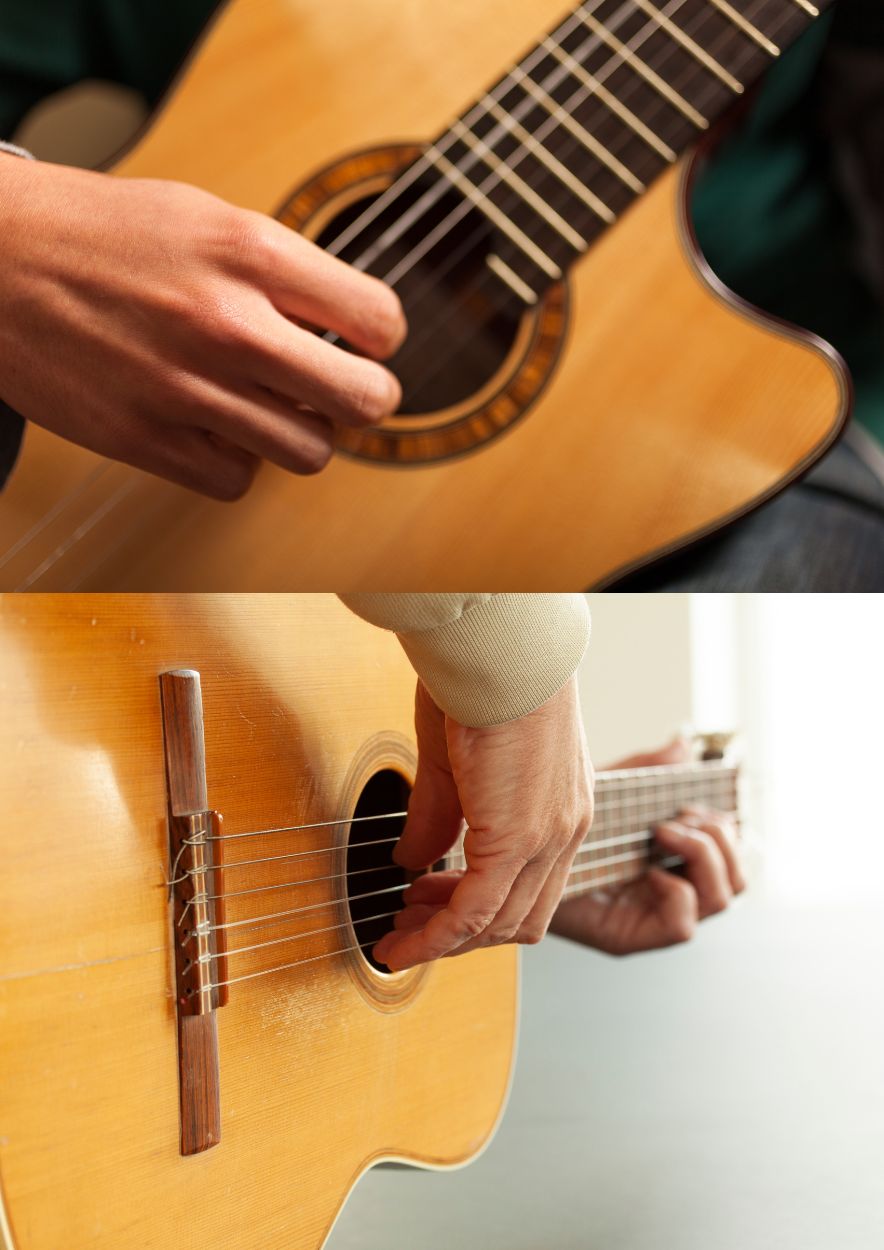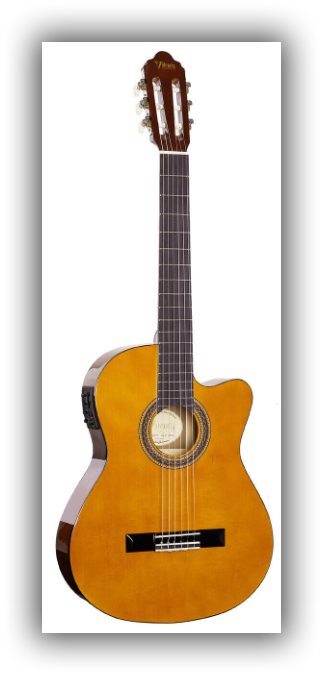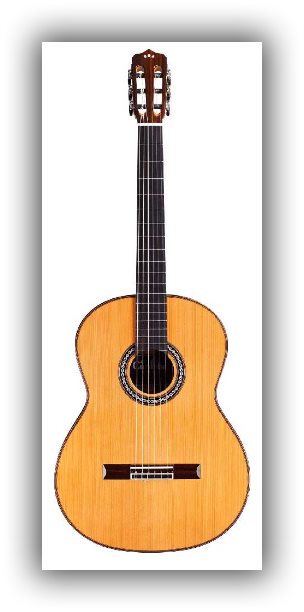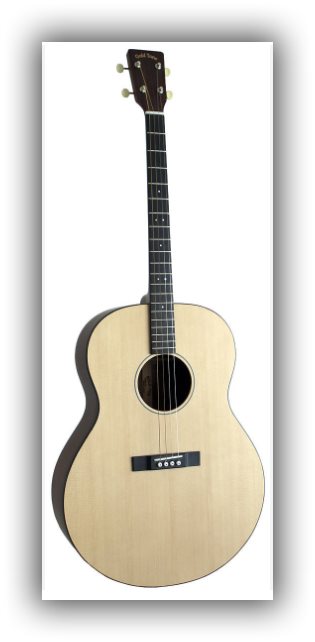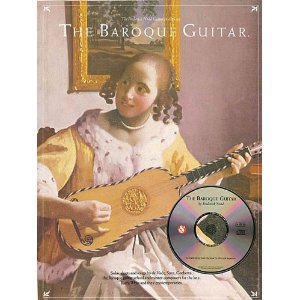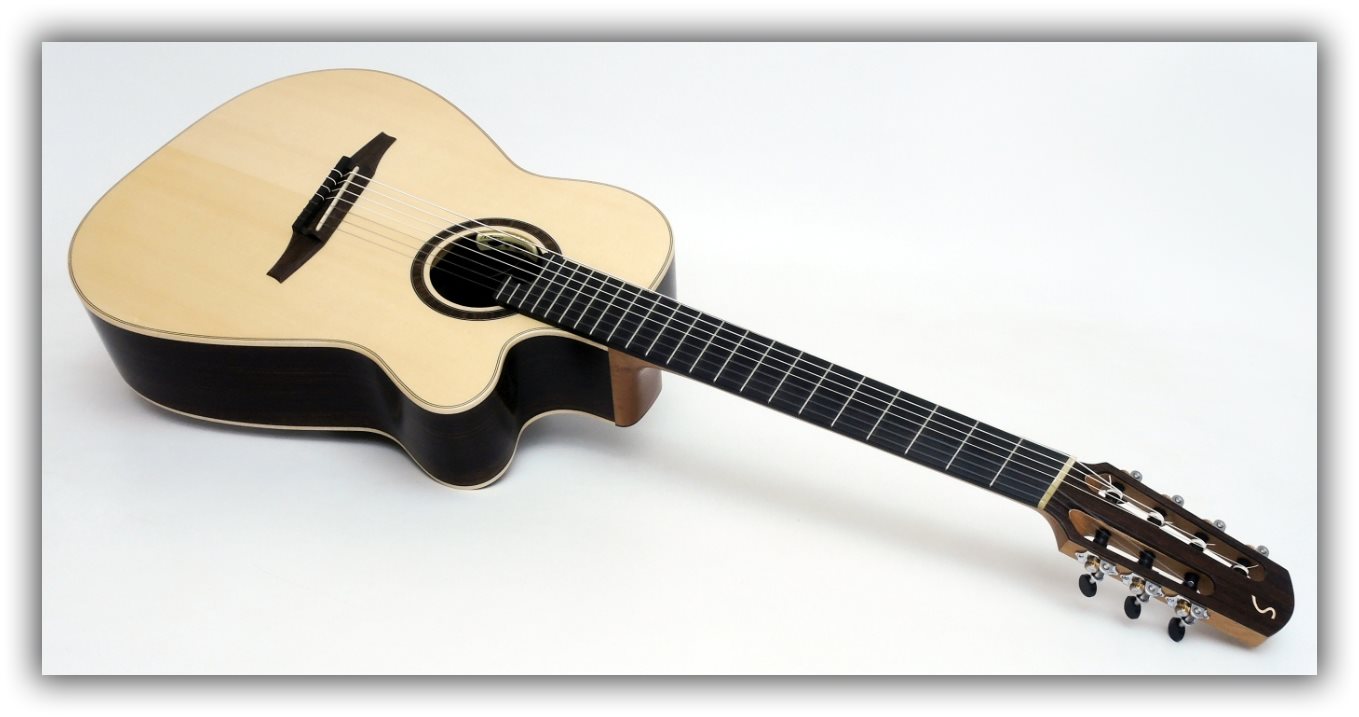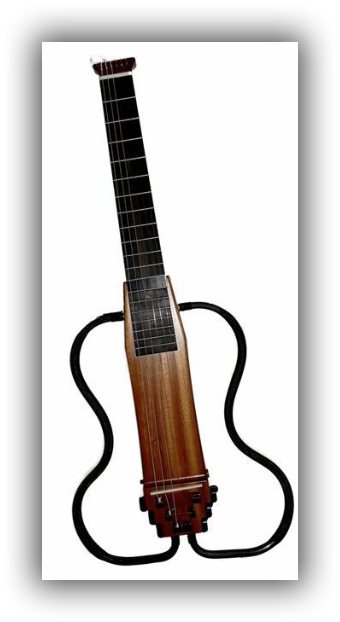- Home
- Classical Fingerstyle Portal
- 15 Actionable Guitar Lessons
- Classical Guitar Technique
- Guitar Lessons
- Beginner Lessons
- Guitar History
- The Renaissance Guitar
- Guitar Time Line
- Classical Guitar Blog
- Contact
- About Author
- Site Search
- Privacy Policy
- Site Map
- Classical Guitar Study Course 3.0
- Instant Classical Guitar Repertoire
- Classical Guitar Lessons For Beginners
What is Classical Guitar Playing?
An Extraordinary Journey of Nylon-Stringed Melodies
Struggling to grasp the essence of just what is classical guitar playing? Dive into our page and unlock the secrets of mastering classical guitar...
From the raw appeal of classic rock to the soothing melodies of country music, the guitar has traversed various genres, captivating audiences worldwide. But in the heart of extraordinary guitar music lies an intriguing genre not many in today’s wide world of music are familiar with: classical guitar.
So, "what is classical guitar playing?" Let's unravel this intriguing world together.
What is Classical Guitar Playing?
Understanding what it is!
Classical guitar playing goes beyond just striking chords and creating music. It's a musical genre that revolves around a specific type of guitar - the classical guitar. Distinguished by its nylon strings, as opposed to traditional steel strings found in other guitars, this unique instrument produces intricate and richly expressive music often achieved through finger-picking techniques.
What sets classical guitar playing apart from, say, rock or folk guitar playing?
Quite a lot, actually!
The unique finger-style technique, the complexity of its melodies, and the way tempo, dynamics, and tone interplay contributes to its uniqueness. Delving into classical guitar basics, you immerse yourself in a new world of guitar music that seamlessly blends musical theory with a symphony of sounds from a single instrument.
Classical guitar playing has a rich history dating back to 19th century Spain. Its cultural significance deeply rooted in the art form itself has journeyed around the globe, marking influential steps along the way. The timeless appeal of famous classical guitar compositions and virtuoso guitarists have the classical guitar etched into the classical music landscape.
What is Classical Guitar Playing?
The Road to Mastery
The journey to mastering classical guitar playing is stimulating and challenging. From perfecting finger techniques and reading sheet music to honing critical listening skills, the road to mastery can be steep. But with understanding and practice - interpreting complex musical pieces, maintaining rhythm, tempo, phrasing - it becomes an incredible journey of personal and musical growth.
It's not uncommon for learners, especially beginners, to encounter technical difficulties like finger coordination and stretch, understanding harmonic voices, or fine-tuning your sound production.
But take heart!
Challenges often lead to growth. With regular practice, open mindset to learning, and the wealth of resources available online, including tutorials, forums, and instructional guides, you can overcome these obstacles and be on your way to mastering classical guitar playing.
So, what exactly is classical guitar playing?
It's more than plucking nylon strings. It's a rewarding endeavor, an exquisite art, a cultural symbol, and, most importantly, it's a journey. And not just a journey through history, but a journey through mastery, self-expression, and music - a universal language that moves hearts and souls.
Whether you're merely dabbling as a hobby or aiming to advance your musical capabilities, embarking on this journey to understand and master classical guitar will offer a vibrant and fulfilling path. Happy strumming!
What is Classical Guitar Playing?
Embracing the Art of Classical Guitar Playing
In the grand scheme of things, regardless of whether you're a hopeful musician, a fervent guitar devotee, an inquisitive student, or a committed educator, it's crucial to grasp that classical guitar playing transcends mere musical classification.
It serves as a lyrical avenue for self-expression—a intricately woven tapestry within the vast expanse of music, where history, culture, artisanal skill, and unbridled passion meld seamlessly in harmonious unity. Enjoy the journey, fuel your passion, and let the music play!
Preparing yourself for the world of classical guitar playing is an exciting venture. Your interest in music, curiosity about classical guitar, experience level, and desire for understanding set the tone for this beautiful journey. Whether you're an eager learner or a problem-solving seeker, turning to digital resources provides bountiful resources to propel your musical journey, all the while appreciating the rich artistry that classical guitar playing offers.
So, let the strings strum and the melodies flow. Welcome to the fantastic realm of classical guitar! As you traverse this remarkable journey, remember to appreciate the profound history, marvel at the craftsmanship, and enjoy each moment. After all, that's the true spirit of music!
Here are the different types of classical guitar that are in use today:
1. Traditional Classical Guitar:
Tonewoods: Traditional classical guitars typically feature a cedar or spruce top and a rosewood or mahogany back and sides. Cedar tops tend to produce a warmer, darker tone, while spruce tops offer more clarity and brightness.
Scale Length: They usually have a standard scale length of around 650mm (25.6 inches), which provides a balanced tone and comfortable playability.
2. Flamenco Guitar:
Tonewoods: Flamenco guitars often have a spruce top and cypress back and sides. The choice of cypress imparts a bright, percussive, and responsive sound ideal for the quick, rhythmic strumming associated with flamenco music.
Construction: These guitars are built lighter than classical guitars, which enhances their projection and responsiveness.
3. Cutaway Classical Guitar:
Design: Cutaway classical guitars have a cutaway portion on the body near the neck, allowing easier access to higher frets. This feature is particularly useful for those who want to explore a wider tonal range.
4. Electro-Acoustic Classical Guitar:
Electronics: These classical guitars are equipped with built-in pickups and preamps, making them suitable for amplification and live performances. They offer versatility for musicians who play in various settings.
5. Crossover Classical Guitar:
Neck Width: Crossover classical guitars have a narrower neck width compared to traditional classical guitars. This makes them more accessible for players transitioning from steel-string acoustic or electric guitars.
6. Tenor Guitar:
Size: Tenor classical guitars are smaller in size compared to standard classical guitars. They have a shorter scale length and are tuned differently, often in a higher pitch. They can be great for players with smaller hands or those looking for a unique sound.
7. Baroque Guitar:
Historical Design: Baroque guitars are designed to replicate the instruments used during the Baroque period (17th and 18th centuries). They have gut strings and a unique tuning system. These guitars are favored by musicians interested in historically informed performance.
8. Multi-Scale Classical Guitar:
Fanned Frets: Multi-scale or fanned fret classical guitars have a unique feature where the frets are angled, with the lower frets shorter than the higher ones. This design can improve intonation and string tension across the fretboard.
9. Travel Classical Guitar:
Travel classical guitars are crafted with mobility in mind, typically featuring a more compact size and lightweight build. These attributes make them a fitting choice for musicians who are frequently on the move.
When making a selection among classical guitars, it becomes crucial to take into account your musical style, playing preferences, and available budget. Each variety boasts its own unique traits that can exert a substantial influence on your playing experience and the quality of sound you can produce. In the end, the optimal classical guitar for you will hinge on your specific requirements and personal musical tastes.
What is Classical Guitar Playing?
Summing Up...
To excel in classical guitar playing, I firmly believe that you should focus on honing the following skills and techniques:
1. Fingerstyle Picking: Classical guitarists predominantly employ their fingers for string plucking, distinguishing this approach from other guitar styles that rely on picks The fingers (thumb, index, middle, and ring) are assigned specific strings to pluck, creating a nuanced and intricate sound.
2. Right Hand Finger Placement: The right-hand fingers are typically designated with letters: P (thumb), I (index), M (middle), and A (ring). These fingers are used to pluck the strings, and different combinations of finger movements produce various tones and textures.
3. Rest and Free Stroke: In classical guitar, there are two main types of finger movements: rest stroke and free stroke. A rest stroke involves plucking a string and then coming to rest on the adjacent string, creating a full, rich sound. A free stroke involves plucking a string and then moving away from the strings, producing a lighter, airy tone.
4. Left Hand Finger Placement: Proper left-hand technique is crucial for accurate and clean fretting. The fingers are numbered 1 (index), 2 (middle), 3 (ring), and 4 (pinky). They are used to press down on the strings to produce different notes and chords.
5. Finger Independence: Developing finger independence is essential for playing complex classical guitar pieces. This means that each finger can move independently, allowing for intricate and simultaneous note selection and execution.
6. Arpeggios: Arpeggios involve playing the individual notes of a chord in succession rather than strumming or plucking them simultaneously. This technique is commonly used in classical guitar to create melodic and harmonic movement.
7. Tremolo: Tremolo is a technique where a single note is rapidly repeated using a specific finger pattern, often producing a shimmering effect. It requires precision and control of both hands.
8. Slurs (Hammer-ons and Pull-offs): Slurs involve playing consecutive notes without re-plucking the string. Hammer-ons involve using a finger to tap a fret while the string is vibrating, producing a smooth transition between notes. Pull-offs involve lifting a finger to produce a similar effect.
9. Vibrato: Vibrato is a technique used to add expression to a sustained note. It involves wiggling the fretted string back and forth to vary the pitch slightly, creating a warm and expressive tone.
10. Trills: Trills are rapid alternations between two adjacent notes. They add ornamentation and flourish to classical guitar music, requiring quick finger movements.
11. Damping and Muting: Classical guitarists often use their right-hand palm to dampen or mute strings not in use, ensuring that only the intended notes ring out clearly.
12. Position Shifting: Shifting hand positions on the fretboard is essential for playing music that spans multiple octaves. Smooth transitions between positions are crucial for maintaining the flow of a piece.
13. Scales and Scale Runs: Practicing scales and scale runs helps improve finger agility and dexterity, enabling you to navigate the fretboard more effectively.
Becoming proficient in these techniques requires dedicated effort and practice, yet they form the fundamental framework of classical guitar artistry. The amalgamation of these skills empowers classical guitarists to craft a diverse spectrum of evocative and passionate music, spanning from gentle melodies to intricate compositions.
So, now you know just what is classical guitar playing :)
Enjoy your journey in the world of classical guitar!
For more information on classical guitar go here...
Question 1: What
is classical guitar playing?
Question 1: What
is classical guitar playing?
Answer: Classical guitar playing centers on a nylon-string guitar and fingerstyle technique, using the right-hand fingers (p-i-m-a) to articulate melody, harmony, and bass lines on one instrument.
Question 2: How
is classical guitar different from steel-string or electric guitar?
Question 2: How is classical guitar different from steel-string or electric guitar?
Answer: It uses nylon strings, fingerstyle (not a pick), and emphasizes tone color, dynamics, and polyphony. Repertoire spans Renaissance to modern works, with technique like rest/free strokes and slurs.
Question 3: Do
I need to learn sheet music to start?
Question 3: Do
I need to learn sheet music to start?
Answer: Reading notation helps you access the full repertoire and voices, but you can begin with basic technique and add reading skills gradually.
Question 4: What
are the essential right-hand techniques?
Question 4: What
are the essential right-hand techniques?
Answer: Rest stroke and free stroke, arpeggios, tremolo, damping/muting, and tone control with p-i-m-a.
Question 5: What
should I focus on with the left hand?
Question 5: What
should I focus on with the left hand?
Answer: Accurate finger placement (1–4), finger independence, smooth position shifts, slurs (hammer-ons/pull-offs), trills, and controlled vibrato.
Question 6: What
are the main types of classical guitars?
Question 6: What
are the main types of classical guitars?
Answer: Traditional classical, flamenco, cutaway, electro-acoustic, crossover (narrower neck), tenor, baroque, multi-scale (fanned-fret), and travel models. Each with distinct feel and tone.
Question 7: Which
classical guitar type is best for a beginner?
Question 7: Which
classical guitar type is best for a beginner?
Answer: For an adult, a traditional full-size classical with a comfortable setup is a safe start; choose cedar or spruce top based on tone preference and your budget. For a child, probably a three-quarter sized guitar is best.
Question 8: Why
are nylon strings used?
Question 8: Why
are nylon strings used?
Answer: They give a warm, round tone and allow nuanced right-hand control for rest/free strokes, tremolo, and subtle dynamics.
Question 9: What
are common early challenges and how do I overcome them?
Question 9: What
are common early challenges and how do I overcome them?
Answer: Finger coordination, stretching, and balancing voices. Use slow, regular practice, mindful tone production, and break pieces into small phrases.
Question 10: How
long before I hear progress?
Question 10: How
long before I hear progress?
Answer: With consistent practice, most learners notice better tone and coordination within a few weeks and smoother phrasing as core techniques settle.
Question 11: Can
I play classical guitar on a cutaway or electro-acoustic model?
Question 11: Can
I play classical guitar on a cutaway or electro-acoustic model?
Answer: Yes. Cutaways help with upper-fret access; electro-acoustics are handy for live amplification. Just choose what supports your own goals.
Question 12: What’s
the big picture of learning classical guitar?
Question 12: What’s
the big picture of learning classical guitar?
Answer: It’s a long-term journey of musicality and self-expression that combines history, craft, and technique to create rich solo music from a single instrument. But it's well worth the effort!
Recent New Pages:

